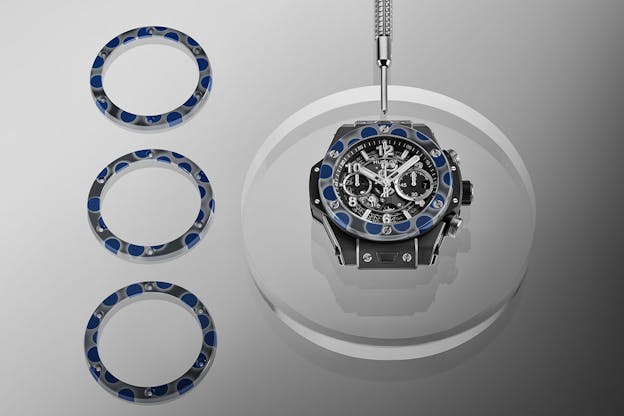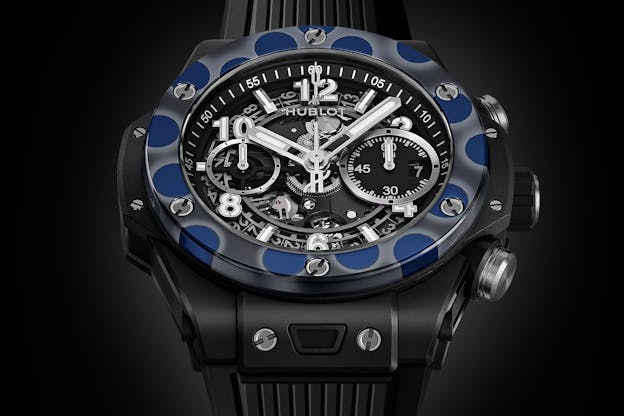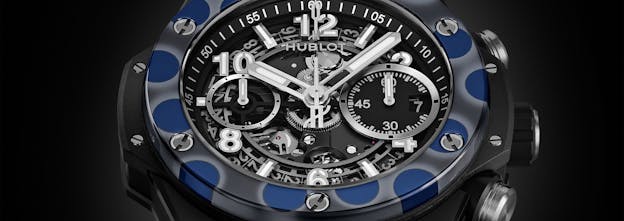Hublot Doubles Down On Ceramic: The New Two-Tone Ceramic Big Bang Unico Magic Ceramic
A new take on two tone timekeeping.
A comprehensive list of unconventional materials that Hublot has used in its watches would run to approximately the length of a novella, at least – you can start with King Gold and Magic Gold and go on from there to things like SAXEM (Hublot’s name for the synthetic sapphire, yttrium aluminum garnet, which it makes in a range of almost flourescent colors). Hublot’s just announced its latest foray into unconventional materials science with the Big Bang Unico Magic Ceramic, which it says represents the first use of multicolored ceramic ever in the history of watchmaking. The claim may be slightly hyperbolic – Rolex has been making two tone ceramic bezels for some time now, although if you want to be accurate, those are surface treatments; Hublot’s claim is based on the fact that its multi-colored Magic Ceramic is colored throughout the bulk of the material, and as far as I know, they are in fact the first brand to produce an industrial ceramic for watchmaking with color intrinsic to the material itself. The effect is mesmerizing and a little unsettling.

The watch is in terms of basic specs, a standard Big Bang with flyback Unico movement caliber HUB1280, which is a newer version of the HUB1240 launched in 2010. HUB1280 went live 9n 2018 and upgraded the HUB1280 which among other modifications, reduced the movement thickness from 8.05mm to 6.75mm. Power reserve is 72 hours at 28,800 vph, and case size is 42mm overall x 14.50mm, water resistant to 10o meters.
But of course what you’re really here for is the two tone bezel. This is produced by using different metallic oxide pigments to produce different colors. Ceramic watch cases are generally made of powdered zirconium oxide, which is powdered and injected into a mold before being heated and compressed. The temperature is high enough to cause the powdered material to fuse but not high enough to cause it to melt completely; the process is called sintering. By mixing different pigments into the primary ceramic material you can get different colors; the main technical challenge is finding pigments which will retain their color at the high temperatures produced during the sintering process.
Back in 2018, Hublot introduced the Big Bang Unico Red Magic, in red ceramic, which highlighted some of the problems involved in making colored ceramics, and specifically, in making a bright red ceramic material. Matthias Buttet, Hublot’s research and development director, said in an article on WatchProSite.com, “This family of ceramics that everyone is trying to get can be called ‘Bright Ceramics.’ The watchmaking and jewelry fields, through major watch brands, needed bright red or yellow ceramics instead of all these very pastel or dark colors that the ceramic industry still offers today. To understand the difficulty of obtaining ceramics in bright colors, it is necessary to know that to harden white ceramic powder (zirconium oxide), needs to reach temperatures up to 2’000°. Yet, the color comes from pigments composed of metal oxide that are destroyed around 800°. It was therefore impossible – at least during these last 20 years, to reach a suitable hardness while preserving the bright color.”




